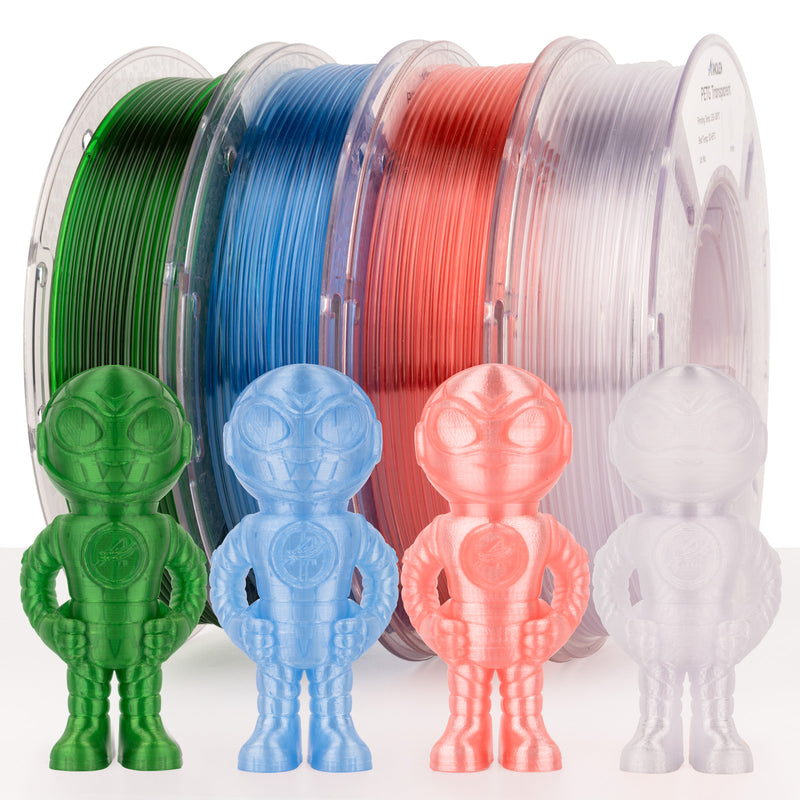Unlock Your Creativity: The Ultimate Guide to Choosing the Perfect PETG Filament for Your 3D Printing Dreams!
As the world of 3D printing continues to expand, the filament you choose plays a pivotal role in the success of your projects. Among the various options available, PETG filament has emerged as a favorite for both hobbyists and professionals alike. Known for its excellent balance of strength and flexibility, PETG is a glycol-modified version of PET (Polyethylene Terephthalate), making it more durable and less brittle than its counterparts. The significance of choosing the right filament cannot be overstated, as it can greatly affect the quality and longevity of your prints. Whether you're creating functional parts, prototypes, or artistic sculptures, understanding PETG and its benefits will set the stage for a successful 3D printing journey.

Understanding PETG Filament
PETG filament is a type of thermoplastic polymer that has gained popularity in the 3D printing community due to its unique properties. It possesses a combination of strength, durability, and flexibility that makes it an ideal choice for various applications. Unlike PLA, which is known for its ease of use but lacks durability, or ABS, which can be challenging to print due to warping and odor, PETG offers a middle ground. Its chemical structure allows it to withstand higher temperatures and provides better impact resistance, making it suitable for functional parts that may experience stress. Additionally, PETG exhibits excellent layer adhesion, which contributes to the overall strength of the printed object. Friends who have experimented with different filaments have often expressed their preference for PETG, noting its reliability and ease of printing.
Benefits of Using PETG Filament
The advantages of using PETG filament for 3D printing are numerous. One of the most appealing features is its durability; prints made from PETG are less likely to break or snap compared to those made with PLA. This makes it especially useful for parts that require some level of flexibility, such as hinges or clips. Another significant benefit is the ease of printing. PETG is less prone to warping, which is a common issue with ABS, allowing for a smoother printing experience. Additionally, PETG filament is resistant to moisture and chemicals, making it an excellent option for creating items that may be exposed to various environmental conditions. Common use cases for PETG include functional prototypes, mechanical parts, and even artistic creations. I once had a friend who printed a complex mechanical device using PETG, and the results were impressive—both in terms of strength and aesthetics.
Choosing the Right PETG Filament
When selecting PETG filament for your 3D printing projects, there are several factors to consider. First and foremost, you'll want to look at the color options available, as PETG comes in a variety of hues and finishes, including transparent and glow-in-the-dark options. The diameter of the filament is also crucial; most 3D printers use either 1.75mm or 2.85mm filament, so ensure compatibility with your machine. Quality is another essential consideration. Not all PETG filaments are created equal; some may have inconsistencies that can lead to print failures. Researching manufacturer recommendations and reading customer reviews can significantly aid in making an informed choice. My experiences with different brands have shown that investing in higher-quality filament often results in more successful prints and less frustration during the printing process.
Tips for Successful 3D Printing with PETG
Achieving successful prints with PETG filament requires a few practical tips that can help maximize your results. Start by adjusting your printer's temperature settings; a typical range for PETG is between 220°C and 250°C. It's essential to find the sweet spot for your specific printer and filament combination. Bed adhesion can also pose challenges—using a heated bed set to around 70°C can help prevent warping and improve adhesion. Additionally, using a glue stick or hairspray on the print bed can provide extra grip. After printing, consider post-processing techniques like sanding or acetone vapor smoothing to enhance the finish of your prints. If you encounter issues like stringing, adjusting the retraction settings can be a game-changer. I remember a time when I struggled with stringing on a project; once I tweaked the retraction settings, the quality of my prints improved dramatically.
Maximizing Your 3D Printing Experience with PETG Filament
In summary, PETG filament offers a compelling choice for 3D printing enthusiasts seeking a versatile and reliable material. Its unique properties lend themselves well to a wide range of applications, from functional parts to artistic endeavors. By understanding the characteristics of PETG and following the tips provided, you can elevate your 3D printing projects to new heights. Embrace your creativity and don't hesitate to experiment with different colors and designs using PETG filament. With the right choices, the possibilities are truly endless!








